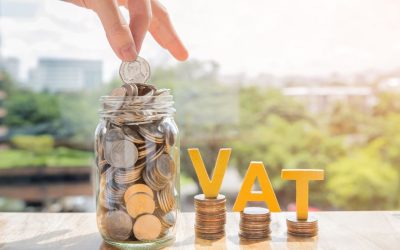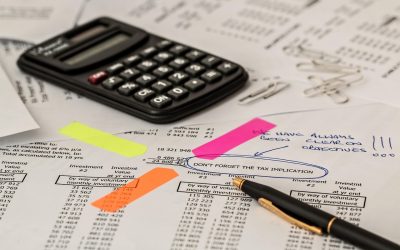For two years, the super deduction gave UK businesses a tax break, allowing them to claim 130% first-year relief on qualifying investments in plant and machinery. But the scheme ended on 31 March 2023. So why was super deduction introduced, and why did it come to an end? More importantly, what tax relief options are available for businesses now?
In this article, we’ll break down what super deduction was, answering questions such as ‘when did super deduction end?’, ‘why did super deduction end?’, and ‘what other schemes are available now for businesses to maximise their capital allowances?’
What was super deduction?
Introduced in the March 2021 budget, super deduction was a scheme that allowed 130% first-year tax relief on qualifying plant and machinery in order to encourage business investment post-pandemic and boost economic recovery.
How did it work?
Before super deduction was introduced, companies could typically claim 18% writing down allowances on qualifying expenditure.The introduction of super deduction capital allowances, however, meant that for every £1 a business invested in eligible assets, they could reduce their taxable profits by £1.30, making it the most generous capital allowance ever. For example, if a company spent £100,000 on new machinery, they could reduce their taxable profits by £130,000, lowering their Corporation Tax bill significantly.
The scheme was available exclusively to limited companies and applied only to new, unused plant and machinery purchases, such as IT equipment, office furniture, and industrial machinery.
Who could claim for super deduction?
Unlike the Annual Investment Allowance (AIA) and Writing Down Allowances (WDA), the super deduction capital allowances scheme was only available to limited companies. Because super deduction was specifically designed to benefit incorporated businesses, this restriction meant that sole traders and partnerships were excluded from the scheme, despite being eligible for other capital allowances.
Limited companies had the opportunity to make substantial tax savings by investing in new plant and machinery, providing a powerful incentive for them to boost their capital spending during the scheme’s duration.
What assets qualified for super deduction?
When it was first introduced, the main question from businesses was ‘what qualifies for super deduction?’ When the government launched it until it ended in March 2023, the super deduction capital allowances scheme applied specifically to new, unused plant and machinery that would usually qualify for the main rate of capital allowances. This meant businesses could claim the enhanced tax relief on a wide variety of assets that were essential for day-to-day operations or for expanding their capabilities. The scheme was designed to encourage companies to invest in up-to-date equipment that would help them improve productivity, efficiency, and competitiveness.
Eligible assets included, but were not limited to:
- IT and computer equipment: Laptops, desktops, servers, and other tech infrastructure.
- Office furniture and fittings: Desks, chairs, shelving, and other office fixtures.
- Manufacturing and industrial machinery: Equipment used in factories and production lines, such as presses, drills, and packaging machinery.
- Tools and equipment: Machinery or tools that are essential for the operation of a business.
- Vans and commercial vehicles: Vehicles used for business operations, such as delivery vans or lorries (excluding cars).
Importantly, second-hand assets were not eligible, meaning companies had to purchase brand-new items to qualify for the relief. This requirement was intended to stimulate fresh investment in the economy by encouraging businesses to purchase the latest technology and equipment.
When did super deduction end?
The government always intended the super deduction capital allowances scheme to be a temporary measure, designed to drive business investment following the pandemic. The scheme ended on its planned expiry date, 31st March 2023, and coincided with the rise in Corporation Tax from 19% to up to 25%, which meant companies could no longer benefit from the enhanced 130% relief.
Why did super deduction end?
As we have discussed above, super deduction was always intended to be a temporary incentive, with the aim of stimulating business investment following the COVID-19 pandemic. The government set a clear end date for the scheme, 31st March 2023, to ensure it served its purpose of encouraging businesses to invest in new plant and machinery during the recovery period. The government needed to balance the temporary economic boost with the long-term financial health of the country.
With the rise in Corporation Tax from 19% to up to 25% in April 2023, the government likely felt that businesses would still have sufficient tax relief opportunities, even without the super-deduction. Ending the scheme was a natural next step as the economy stabilised and businesses no longer needed the same level of immediate support.
What replaced super deduction?
Despite the government feeling that two years was long enough to give limited companies the 130% first-year tax relief, they did believe that businesses still needed support to continue investing in new assets. Let’s explore the scheme that replaced super deduction and other capital allowances initiatives that businesses could use to maximise their tax relief:
Full Expensing
Introduced in April 2023 following the expiry of super deduction, the full expensing scheme was designed to continue encouraging businesses to invest in new plant and machinery. Under this scheme, companies can deduct 100% of the cost of qualifying assets in the year of purchase, allowing businesses to reduce their taxable profits immediately.
Full expensing allows companies to write off the entire cost of eligible assets, no matter how much they spend. It applies to a wide range of assets used in business operations, including IT equipment, office furniture, and industrial machinery. While designed to support growth and investment, full expensing is also aimed at improving business cash flow, helping companies reinvest those savings into further innovation and expansion.
The Full expensing scheme is set to last for a temporary period, and is currently planned to end in March 2026. This gives businesses a 3-year window to claim this 100% tax relief on qualifying investments. However, as with many government schemes, the end date could potentially be reviewed or extended depending on economic conditions and government policy at the time.
Annual Investment Allowance (AIA)
The Annual Investment Allowance (AIA) was introduced in 2008 as part of the Finance Act to incentivise businesses to invest in plant and machinery assets. It provides businesses with the ability to claim 100% tax relief on qualifying expenditure, helping to reduce their taxable profits in the year of purchase. Initially set at a much lower threshold, the AIA has seen several increases over the years, with the current limit being £1 million for eligible spending on capital assets.
With AIA, businesses can deduct the entire cost of qualifying assets – such as IT equipment, office furnishings, manufacturing machinery, and other essential business equipment – from their profits in the year the asset is purchased. This immediate deduction improves cash flow, allowing businesses to reinvest those savings in growth and expansion.
The scheme is available to various types of businesses, including limited companies, sole traders, and partnerships, making it accessible for businesses of all sizes. However, the AIA has specific rules regarding eligibility and asset types, and businesses must ensure they comply with the scheme’s conditions to fully benefit from the relief.
Writing Down Allowances (WDA)
Writing Down Allowances (WDA) are a type of capital allowance available to businesses for assets that do not qualify for Full Expensing or the Annual Investment Allowance (AIA). Unlike the AIA, which allows 100% of an asset’s cost to be deducted in the first year, WDA provides a more gradual approach to tax relief. Businesses can claim relief on the cost of qualifying assets over a period of time, typically several years, based on the asset’s value and its category.
WDAs apply to plant and machinery that don’t meet the criteria for AIA or full expensing, including second-hand assets or those with a longer lifespan. There are two rates at which WDA can be claimed, depending on the type of asset: a main rate of 18% per year and a special rate of 6% per year for specific assets such as integral features like heating and lighting systems or long-life assets.
Although the WDA doesn’t offer the same upfront financial relief as AIA or full expensing, it still helps businesses recover some of the costs of capital investments over time. This can be particularly valuable for businesses investing in long-term assets that need to be written down gradually.
How Eureka Capital Allowances can help
Although the super deduction capital allowances incentive ended a couple of years ago, there are other schemes that mean tax relief on investments is still available for certain businesses and assets.
At Eureka Capital Allowances, we have decades of experience in capital allowances, so we are more than capable of helping our clients to unlock thousands of pounds of hidden tax relief. Our team of capital allowances specialists are trained in helping business owners across all industries understand what capital allowances they are eligible for and navigate the claims process quickly and effectively.
Contact us today for a free capital allowances review and to find out more about how we can help you.



